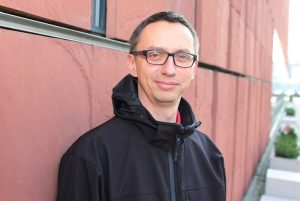On the one hand, we hear more and more about the periods of draught and heatwaves in Poland; on the other hand – about the increasing extreme atmospheric phenomena, such as violent storms and downpours that result in floods. Such phenomena, which also occur in other Central European countries, are very important for the efficient water resource management. We already need to look for solutions mitigating climate changes, otherwise the decreasing water resources may lead to conflicts between the users – so that everyone has access to sufficient amount of water. One of such solutions will be tested in Poland as part of the international DEEPWATER-CE project. Dr. Sławomir Sitek, head of the Polish research team in the project, tells us about it.
One of the effects of the above-mentioned extreme weather phenomena is significant fluctuations of water flow volumes in rivers. The observed changes, in turn, affect the amount of available water resources. In 2019, Polish Hydrogeological Survey published several warnings for the Silesian Voivodeship about the low level of underground water table, resulting in water shortage in individual farm intakes and municipal intakes which use the first water-bearing level. It’s a situation that concerns us here and now. Due to this, in order to prevent conflicts between users, strategic documents more and more frequently call for additional underground water recharge.
‘If we know that we have periods of violent downpour throughout a year, which result in a high level of water in rivers, we may wonder how to store the periodic excess of water to be used later, for example during periods of draught’, says Dr. Sławomir Sitek from the Faculty of Natural Sciences at the University of Silesia. ‘In fact, we don’t really need additional infrastructure to reach this goal. An underground water reservoir can be a natural water basin. Our only duty is to answer the question how water resources from rivers or rainfall can be put into the water-bearing layer and how to take care of its quality’, he adds.
There are many effective methods supporting the management of additional underground water recharge – the so-called Managed Aquifer Recharge (MAR). As explained by the hydrogeologist from the University of Silesia, the biggest challenge is to adjust the chosen method to the conditions of its implementation. ‘What worked well in USA, does not necessarily prove itself in Spain’, says the scientist. It all depends on the geological structure and hydrogeological conditions of a particular area.
Infiltration ditches and ponds are often a satisfactory solution in the case of surface layer rocks with good permeability. However, if such rocks have low permeability, then the methods based on drilling holes need to be applied. Scientists have to recognise the land well to choose the best method of underground water recharge.
The project covers pilot areas in Poland, Slovakia, Croatia and Hungary. The partner of the project in our country is Tarnowskie Wodociągi Sp. z o.o. Feasibility studies in the drinking water intake Świerczków in Tarnów will be carried out for the chosen methods of additional underground water recharge. The research involves hydrogeologists from the Faculty of Natural Sciences at the University of Silesia, and the team leader is Dr. Sławomir Sitek.
‘It’s a very interesting area. First, we must recognise its geological structure and hydrogeological conditions to choose the best method. Next, we should also take into account other factors resulting from the location of the water intake’, says the scientist. One of the greatest challenges is to consider the land of the open-pit mining of gravel and sand, landfill sites, as well as one of the biggest chemical companies in Europe producing e.g. fertilisers, which is based there. Such elements may have key significance for the quality of waters and must also be contemplated during the method application.
Luckily, as the hydrogeologist admits, the water filtration process itself may naturally contribute to cleaning water. This solution is the best, because it’s ecological and the cheapest.
‘We are also planning to establish a system of rapid alerts against the pollution of water pumped by the intake, as part of the whole implemented system. Our ultimate goal is for the drinking water intake Świerczków in Tarnów to pump 400m3/h of water even with a low level of water in Dunajec, which is not possible at the moment’, emphasizes Dr. Sławomir Sitek.
The information obtained in this way will support the management of water resources thanks to their protection and sustainable use, taking into consideration factors such as various geological and hydrogeological conditions, as well as different climate scenarios for the Central Europe region. The project partners are also planning to develop national action plans and recommendations to adopt MAR solutions regarding water supply. The DEEPWATER-CE project involves 7 partners from 5 countries: Hungary (Mining and Geological Survey of Hungary, Geogold Kárpátia Sp. z o.o.), Croatia (water supply and sewage company in Split, Croatian Geological Survey), Slovakia (Water Research Institute), Germany (Technical University of Munich) and Poland (University of Silesia), as well as 5 associated partners. The project is financed under Interreg Central Europe transnational programme. The total budget of the project is EUR 1,771,535.
Detailed information is available at www.interreg-central.ue/Content.Node/DEEPWATER-CE.html.
Małgorzata Kłoskowicz | Press Section






